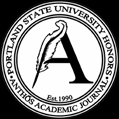Abstract
I begin by offering some highlighting certain aspects of Tibetan language variation with particular attention to the local Gyalthang variety. In the following section I introduce Gyalthang’s touristic Old Town and the language situation there, exploring how the highly divergent nature and mutual unintelligibility of Tibetan language varieties inform stakeholder language attitudes. I place Gyalthang Tibetan into the UNESCO framework for assessing language vitality to explore the interactions of these attitudes and the implications they have for the maintenance of the local Tibetan variety. I conclude with a discussion of what language shift in Gyalthang reveals about language shift in general. The example of Gyalthang’s Old Town complicates the notion of language shift in which one group succumbs to a single dominant homogenous force. What this case illustrates instead is a multilingual situation fraught with issues of socioeconomic and prestige inequalities against a backdrop of urbanization and globalization.
DOI
10.15760/anthos.2014.111
Creative Commons License

This work is licensed under a Creative Commons Attribution-NonCommercial-Share Alike 4.0 International License.
Persistent Identifier
http://archives.pdx.edu/ds/psu/12598
Recommended Citation
Peters, Simon
(2014)
"Gyalthang Southern Khams Tibetan: A Case Study of Language Attitudes and Shift in Shangri-La,"
Anthós:
Vol. 6:
Iss.
1, Article 9.
https://doi.org/10.15760/anthos.2014.111
Included in
Anthropological Linguistics and Sociolinguistics Commons, Language Description and Documentation Commons
